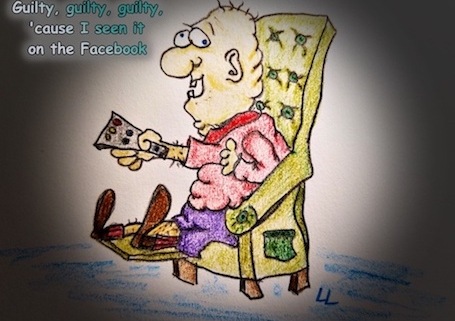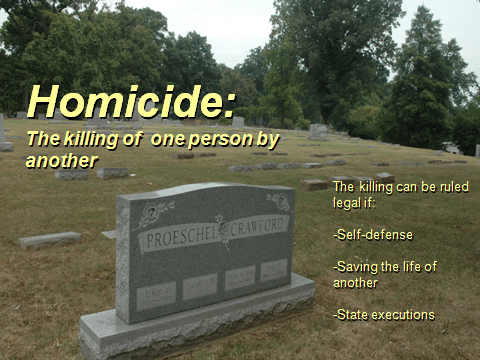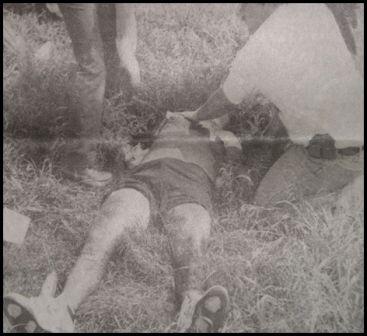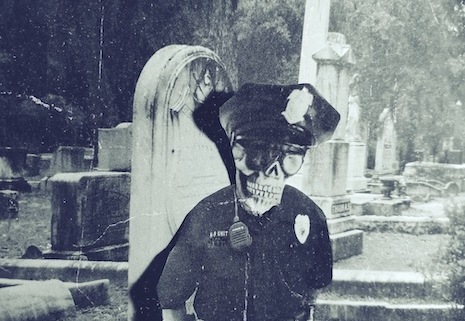“Shots fired!”
“I’m hit”
“He’s running.”
“I need backup.”
“In the alley behind Joe’s Pawn Shop.”
“He’s shooting again.”
Silence.
Then, “Man down! Send paramedics … NOW!”
And then it starts. The looky-loos come out of the woodwork with cellphones and cameras in hand. The cop-haters who’re looking for an excuse to lob a few rocks and bricks and circle around the officer who’s bleeding, and scared and upset, with a million zillion images bouncing around inside his skull. And the “what-ifs” ricochet among those images. It’s a devastating experience, realizing you’ve just shot someone.
The cop’s adrenaline is in crash mode and his emotions are speeding to places they’ve not been before. Time is in full herky-jerky mode, speeding up to catch up to realtime after its abrupt switch to slow motion when the action first fired-up its engines. Sound returns slowly after a bout of “tunnel hearing.”
“If I Only Had a Brain” ~ The Scarecrow, from The Wizard of Oz

Each of us, hopefully, has a functioning brain (there are exceptions for politicians) and it’s that mass that fills the space between our ears that controls everything we do. It’s also in charge of our emotions. More specifically, it’s the amygdala section of the brain that’s assigned charge of emotional responses. The amygdala typically works and plays well with the other parts of the brain, including the prefrontal cortex that, by the way, controls complex decision-making.
However, when the brain perceives danger, the typically smooth-running operation inside our skulls goes a bit wonky because the moment danger is detected a major dam located in the adrenal glands is breached. This sudden discord sends out adrenaline to flood our systems.
Adrenaline, the hormone that boosts blood circulation, increases breathing rate and metabolism and causes our muscles to rise up and prepare for battle. Then all hell breaks lose.
The amygdala section of the brain decides it wants to be in charge and leads a successful coup against the prefrontal cortex, taking control of the making of decisions. Since the amygdala has not been properly schooled in decision-making skills, the results are kaleidoscopic and slightly out of whack responses to various situations. It distorts and narrows our visual and auditory senses to the point where we often focus our attentions on a single point, skipping over other often important things taking place around us.
Fellow author, friend, and police psychologist Ellen Kirshman summed up the experience as it relates to police officers as, and I don’t recall her exact words, but were something like, “Police officers are called upon to do the unnatural. They run toward danger, not away from it.” I read her quote in an article a while back about the deputy in Florida who failed to act during the horrific school shooting that occurred there. She also said something similar to what I’ve said here on this blog time and time and time again … no one but the officer who’s at the scene at the precise moment the danger takes place knows exactly what happened. (Ellen, I apologize if I’ve misquoted you, but I couldn’t locate the article).
In other words …
Monday Morning Quarterbacks Lack the Touch, Taste, Smell, and Motion to Know with 100% Certainty What Took Place
It’s easy for the public to render judgement regarding an officer’s actions, or lack of action, by switching on the TV or their computers to view a video recording of an event. Commentators often offer slow-motion replays, rewinds, zoom views, and various angles, and their opinions as to what happened and/or should have or shouldn’t have happened.
The officer on the scene, however, views the situation in real time, within a time period of a split second or two, while their brain is sending adrenaline throughout their system, with parts of the mind taking charge over other parts that typically supply reason based upon well-thought-out decisions, decisions that take time and energy before an action is performed.
The body of an officer involved in an intense shootout is undergoing many changes all at once. There’s the whole adrenaline thing, of course, while the brain is rapidly switching back and forth between tunnel vision to tunnel hearing, meaning that during the times they’re visually surveying a scene the volume of their auditory functions is greatly reduced, or nonexistent. They cannot use both tunnel vision and tunnel hearing at the same time. The brain does not allow it during times of extreme stress.
Furthermore, during times of extreme stress, the brain may completely shut off auditory functions which is the reason that in post shooting interviews some officers report not hearing the sounds of shots being fired.
I, for one, am a perfect example. During a bank robbery shootout, I saw puffs of smoke (in slow motion) rise from the robber’s handgun, but never heard a single sound. Not even when I returned fire. Actually, from the moment the situation turned violent until I chased the wounded man and tackled him, I don’t recall hearing anything until I rolled him over and then heard the “click, click, clicks” as he pointed his gun at me and repeatedly pulled the trigger. I’ll never forget those sounds. Not ever.
Thankfully, he’d fired the last round before making his final charge. But until that point, it’s like we were in a vacuum.
This experience and others like it explain why so often police officers simply do not recall hearing a specific number of shots fired. In the world of neuroscience this total shutdown of hearing is called auditory exclusion.
A police officer’s overall situational awareness can become dulled to the point of totally blocking out things going on in their periphery, which presents a huge problem for them if the field of danger extends beyond the point of their focus/attention, and it often does—more than one attacker, threat, etc.
Filling In the Blanks
Officers are human, a fact which seems to escape some people. And being human prompts the desire for them to believe they “should have” both heard and seen the action as it unfolded. Therefore, their very human minds attempt to supply the missing information—the sound of gunfire or seeing the man with a gun standing to the side.
To fill in these voids the brain creates a memory by drawing on context and even experience (“I know that’s what a gunshot sounds like therefore I must’ve heard that sound today”).
The same is true in reverse. The officer who’s incapable of remembering a crucial bit of information that occurred during a stressful event, while their attention was distracted, actually may not believe it happened, despite clear and concrete evidence to the contrary.
This, the brain creating “fill in the blank” memories is one reason why so many Monday morning quarterbacks immediately jump to the unfounded conclusion that an officer must be lying or attempting to cover up a misdeed. But it’s just not so. Sure, sometimes people lie. I won’t discount that fact. But in the vast majority of stressful encounters, law enforcement or otherwise, the amygdala section of the human brain is the culprit.
Anyway, the only true means to judge any situation is in real time surrounded by all the sights, sounds, tastes, and emotions that come with it, along with access to the officer’s thoughts and emotions as the event unfolded. Attempting to do so on Monday morning while watching a replay of video is not the same.
Not even close.
Nor is it possible.
OMG! Death of Person Killed By Cops Ruled a HOMICIDE!
Please, don’t let those click-bait headlines get your unmentionables all bunched up, because ALL, and I repeat, ALL killings of human beings by other humans are homicides. And certain homicides are absolutely legal.
That’s right, L.E.G.A.L., legal.
Yes, each time prison officials pull the switch, inject “the stuff,” or whatever means they use to execute a condemned prisoner, they commit homicide. All people who kill attackers while saving a loved one from harm have committed homicide. And all cops who kill while defending their lives or the lives of others have committed homicide. These instances are not a crime.
It’s when a death is caused illegally—murder or manslaughter—that makes it a criminal offense.
Murder is an illegal homicide.
For example, in Virginia:
§ 18.2-32. First and second degree murder defined; punishment.
Murder, other than capital murder, by poison, lying in wait, imprisonment, starving, or by any willful, deliberate, and premeditated killing, or in the commission of, or attempt to commit, arson, rape, forcible sodomy, inanimate or animate object sexual penetration, robbery, burglary or abduction, except as provided in § 18.2-31, is murder of the first degree, punishable as a Class 2 felony.
All murder other than capital murder and murder in the first degree is murder of the second degree and is punishable by confinement in a state correctional facility for not less than five nor more than forty years.
Therefore, those seemingly dramatic headlines that read “Shooting By Cop Ruled a Homicide,” well, they’re often nothing more than words used to affect people’s emotions, induce a reaction, or to encourage people to click over to their website, which, by the way, is how many “news” outlets pay the bills.
So please, un-wad those unmentionables and don’t be a victim of media sensationalism.
Yet another “Please”
Please don’t rely solely on news and social media as a basis for rendering judgement on any incident. Those reports are all over the place, and many are extremely inaccurate. They’re often uneducated speculations, wishes, dreams, etc. of “reporters” hoping to get the first scoop and to stir the emotions of readers and viewers. It’s always best to wait until all facts surface before making a final determination. Unless, of course, there’s a credible video such as the one seen by the world where the officer held his knee pressed into George Floyd’s neck.
The Atlanta officer-involved shooting resulted in the death of a person, but the circumstances involved were far different. Sure, there was video, but what we saw occur on this particular video is not as clear cut as the one recorded in Minneapolis.
 Remember, the law says we’re not allowed to play Monday morning armchair quarterback. Instead, we must base our decisions on the reasonableness of a particular use of force from the perspective of a reasonable officer on the scene. Not the opinion of @I.B. Lion, the guy in his mom’s basement who pumps out dozens of false media reports on social media sites.
Remember, the law says we’re not allowed to play Monday morning armchair quarterback. Instead, we must base our decisions on the reasonableness of a particular use of force from the perspective of a reasonable officer on the scene. Not the opinion of @I.B. Lion, the guy in his mom’s basement who pumps out dozens of false media reports on social media sites.
From Tennessee v. Garner
“The use of deadly force is not justifiable . . . unless (i) the arrest is for a felony; and (ii) the person effecting the arrest is authorized to act as a peace officer or is assisting a person whom he believes to be authorized to act as a peace officer; and (iii) the actor believes that the force employed creates no substantial risk of injury to innocent persons; and (iv) the actor believes that (1) the crime for which the arrest is made involved conduct including the use or threatened use of deadly force; or (2) there is a substantial risk that the person to be arrested will cause death or serious bodily harm if his apprehension is delayed.”
The Supreme Court said in the Graham v. Connor decision, “The reasonableness of a particular use of force must be judged from the perspective of a reasonable officer on the scene, rather than with the 20/20 vision of hindsight.”
*This post is not a political statement, nor is it a defense of any officer’s actions.
I was not at the location where the man was shot and killed by police in Atlanta so it would be impossible for me to know exact details. I will never know the precise thoughts going through the officers’ mind and/or the state of their emotions and perceptions at the time of the shooting. No one could.
Again, I’m not pointing fingers or offering an opinion as to right or wrong. Just the facts.









